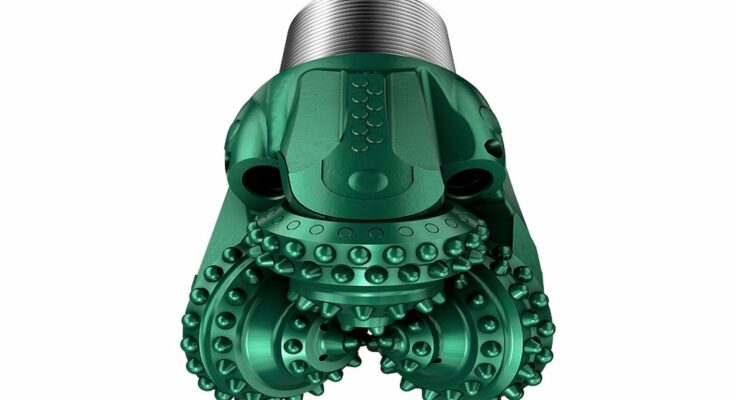Rotary drill bits are indispensable in various industries, from oil and gas exploration to construction. These bits are engineered with precision to bore through rigid materials efficiently. Understanding their anatomy is crucial for optimising drilling operations. In this article, we’ll dissect the components of rotary drill bits and delve into their functions to unveil the mechanisms behind their effectiveness.
Cutting Structure
The cutting structure forms the core of the rotary drill bit responsible for material removal during drilling. It comprises several key components:
- Cone or Bit Body: This is the main body of the drill bit, typically made of rigid materials like tungsten carbide or diamond. It provides structural support and houses other cutting elements.
- Cutters: These teeth or inserts are attached to the bit body. They come in various shapes and materials, each designed for specific drilling conditions. Tungsten carbide inserts are standard for their durability and resistance to wear, while diamond-enhanced cutters offer superior hardness for drilling through complex formations.
- Gauge Cutters: Positioned around the outer edges of the bit gauge cutters, maintain the desired hole diameter by cutting the rock formation’s sidewalls. They prevent the bit from deviating off course and ensure a straight borehole.
Fluid Circulation System
Rotary drilling generates significant heat and debris, impairing the bit’s performance if not managed effectively. The fluid circulation system is vital in cooling the bit and removing drilling cuttings. Key components include:
- Nozzles: Strategically positioned on the bit, nozzles direct drilling fluid (commonly mud or water) onto the cutting structure. It helps dissipate heat generated during drilling and flushes away debris, preventing bit plugging.
- Flow Paths: Inside the bit, specially designed channels facilitate the flow of drilling fluid to reach the cutting structure and carry away cuttings. Efficient flow paths ensure proper cooling and cleaning, enhancing drilling efficiency and prolonging bit life.
- Jetting Action: As drilling fluid exits the nozzles at high velocity, it creates a jetting action that aids in breaking up rock formations and improves the bit’s cutting efficiency. This hydraulic force enhances penetration rates, especially in challenging formations.
Connection Interface
The connection interface is where the rotary drill bit attaches to the drill string, transmitting rotational torque and axial force from the surface rig to the bit. Key components include:
- Threaded Connection: Most drill bits feature threaded connections compatible with standard drill pipe threads. It ensures a secure attachment and allows easy assembly and disassembly during drilling operations.
- Subs or Stabilizers: In some cases, subs or stabilisers are added between the drill bit and the drill string to provide additional stability and reduce vibrations. These components help maintain directional control and prolong the life of the drill string and other downhole tools.
Bearing System
Rotary drill bits operate under extreme conditions, subject to high rotational speeds and heavy axial loads. The bearing system supports the bit’s rotation and axial movement, ensuring smooth operation and longevity. Key components include:
- Journal Bearings: Positioned within the bit’s body, journal bearings support the bit’s radial load and facilitate rotation. They are typically made of hardened steel or tungsten carbide to withstand the harsh downhole environment.
- Thrust Bearings: Situated at both the upper and lower sections of the drilling apparatus, the bit thrust bearings are engineered to endure the axial force encountered during the drilling process. These bearings must be robust to handle the high thrust loads encountered in deep drilling applications.
- Sealing Mechanisms: Sealing mechanisms, such as rubber or metal seals, inhibit drilling fluid and debris ingress into the bearing compartments. Proper sealing is essential for maintaining bearing integrity and preventing premature failure.
Conclusion
Rotary drill bits are intricate tools engineered to withstand the rigours of drilling operations while delivering optimal performance. By understanding the anatomy of rotary drill bits, including their cutting structure, fluid circulation system, connection interface, and bearing system, operators can enhance drilling efficiency, minimise downtime, and maximise resource recovery. As drilling technology advances, a deeper understanding of drill bit design and function will be indispensable for pushing the boundaries of exploration and extraction in various industries.
Rotary drill bits are indispensable in various industries, from exploration and gas to construction. These bits are engineered with precision to bore through rigid materials efficiently. Understanding their anatomy is crucial for optimising drilling operations. In this article, we’ll dissect the components of rotary drill bits and delve into their functions to unveil the mechanisms behind their effectiveness.



